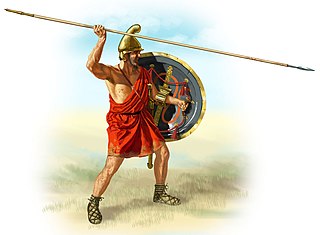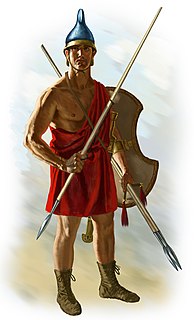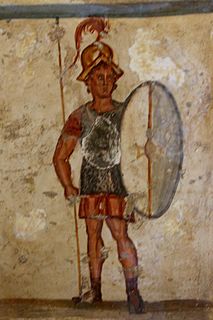 W
WThe army of the Kingdom of Macedon was among the greatest military forces of the ancient world. It was created and made formidable by King Philip II of Macedon; previously the army of Macedon had been of little account in the politics of the Greek world, and Macedonia had been regarded as a second-rate power.
 W
WA cataphract was a form of armored heavy cavalryman fielded in ancient warfare by a number of peoples in Europe, Eastern Asia, Western Asia, and Northern Africa.
 W
WThe Companions were the elite cavalry of the Macedonian army from the time of king Philip II of Macedon, achieved their greatest prestige under Alexander the Great, and have been regarded as the first or among the first shock cavalry used in Europe. Chosen Companions, or Hetairoi, formed the elite guard of the king (Somatophylakes).
 W
WA hypaspist is a squire, man at arms, or "shield carrier". In Homer, Deiphobos advances "ὑπασπίδια" or under cover of his shield. By the time of Herodotus (426 BC), the word had come to mean a high status soldier as is strongly suggested by Herodotus in one of the earliest known uses:
 W
WThe Roman legionary was a professional heavy infantryman of the Roman army after the Marian reforms. These soldiers would conquer and defend the territories of the Roman Empire during the late Republic and Principate eras, alongside auxiliary and cavalry detachments. At its height, Roman legionaries were viewed as the foremost fighting force in the Roman world, with commentators such as Vegetius praising their fighting effectiveness centuries after the classical Roman legionary disappeared.
 W
WThe Macedonian phalanx is an infantry formation developed by Philip II and used by his son Alexander the Great to conquer the Achaemenid Empire and other armies. Phalanxes remained dominant on battlefields throughout the Ancient Macedonian Period, although wars had developed into more protracted operations generally involving sieges and naval combat as much as pitched battles, until they were ultimately displaced by the Roman legions.
 W
WA peltast was a type of light infantry, originating in Thrace and Paeonia, who often served as skirmishers in Hellenic and Hellenistic armies. In the Medieval period, the same term was used for a type of Byzantine infantryman.
 W
WIn Ancient Greek armies, the psiloi were the light infantry who usually acted as skirmishers and missile troops, and who were distinguished from the armored hoplitai by their light weapons and lack of armor.
 W
WSomatophylakes in its literal English translation from Greek, means "bodyguards."
 W
WThe thorakitai were a type of soldier in Hellenistic armies similar to the thureophoroi. The literal translation of the term is "cuirassiers", which suggests that they may have worn a short Celtic mail shirt or possibly a linothorax.